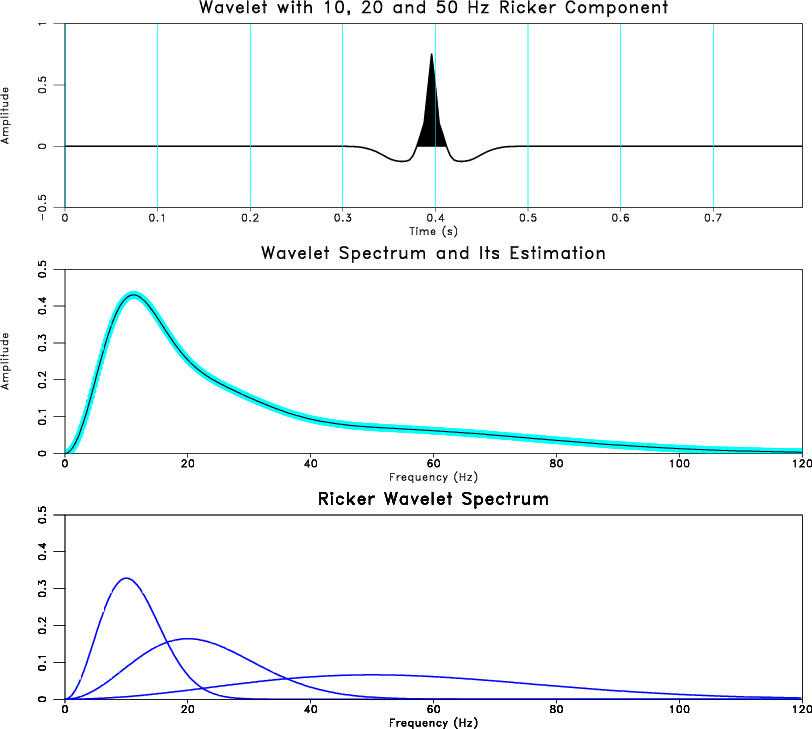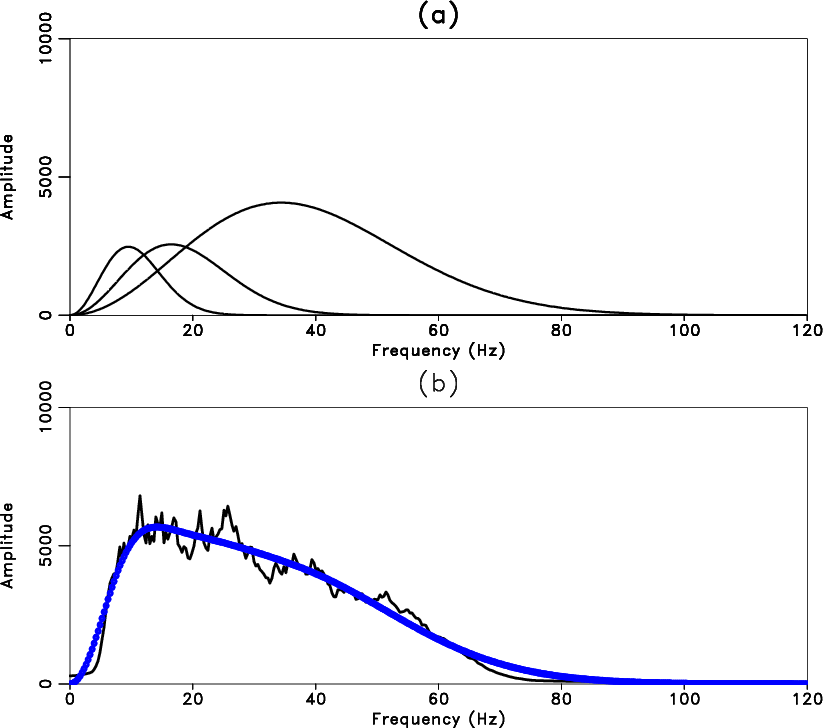|
|
|
|
Automated spectral recomposition with application in stratigraphic interpretation |

|
|---|
|
rk
Figure 1. (a) A wavelet composed of 10, 20 and 50 Hz Ricker components. (b) The estimated wavelet spectrum components are plotted individually. The estimated peak frequencies of these components are 9.999, 19.999 and 49.995 Hz. (c) We computed and estimated the spectrum of the wavelet in (a). Spectral recomposition result (in green) fits the spectrum (in black) very well. |
|
|

|
|---|
|
recomp
Figure 2. (a) Spectra of ricker wavelet components. Each spectral component is well separated, probably indicating different geological factors. (b) Spectral recomposition result (in blue) fits the seismic spectrum (in black) well. |
|
|
|
|
|
|
Automated spectral recomposition with application in stratigraphic interpretation |